Addington is a very difficult course measuring just under 6000 yards from the daily tees, however the course plays much like a 6400 yarder. It may seem just an Addington anomoly, but there are two main reasons for the magical added yardage. First, in an almost imperceptible way, Addington has six short holes. This has the knock on effect of adding a virtual 400-500 yards to the card. Second, many holes require rather steep uphill approaches. Make no mistake, Addington severely tests the long ball. Compare scorecards from today and 1937, very little change in 85 years.
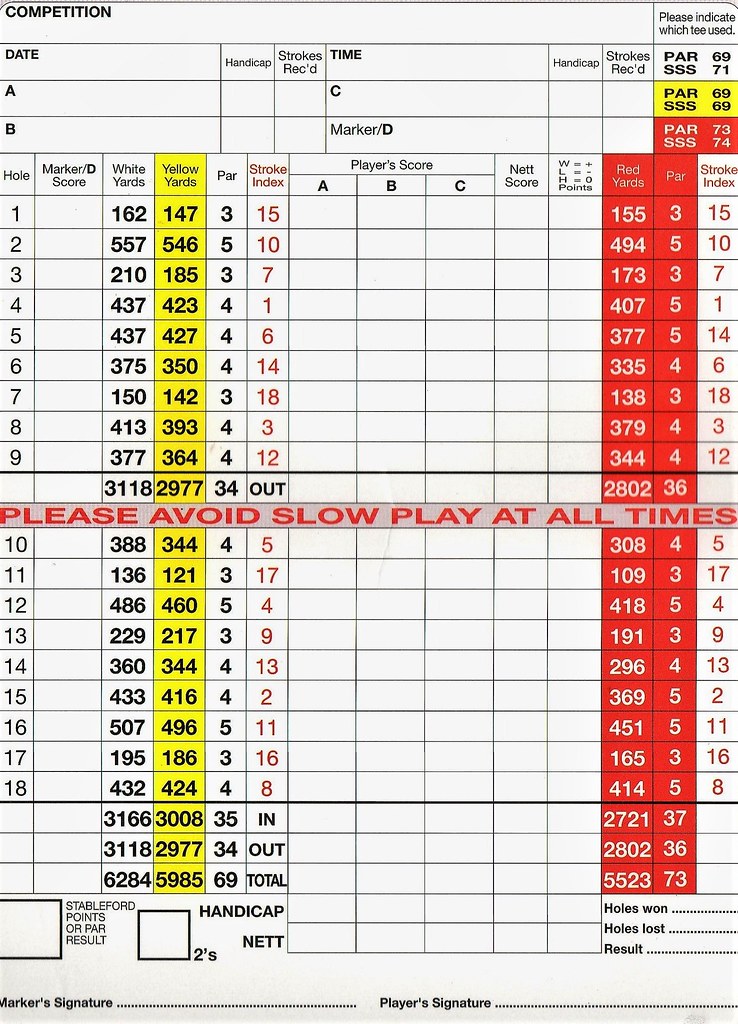
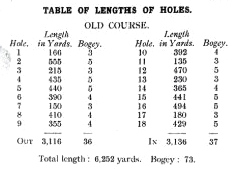
Addington has what I would call four controversial holes. I expect all know about #12. It can't be properly described anyhow. The other three are #s 8, 13 & 16. If there is any such thing as an over the top hole #8 is it. A 400+ yarder legging hard left with a blind, steeply uphill drive. The fairway is humpbacked with both sides falling away. The hole has been massively improved with recent tree clearance to the point where it may no longer be controversial. #13 is an evil 200 yard par 3 with bunkering left and right. Nothing but perfection will do. Very penal in nature, but great none the less. #16 is an All England short 500 yard par 5 which slings hard left and downhill. The hole begs the golfer to go for it in two mainly because the layup is more or less an iron. You see, Addington is riddled with ravines, one of which cuts through the fairway just short of the green. Additionally, the fairway runs downhill about 100 yards out so the layup needs to be short of this steep area. Great hole! Perhaps the best on the course.
One of the most refreshing aspects of Addington is the bunkering in no way defines the course. Perhaps this is because the bunkering wasn’t built until 1924ish, well after the course was designed in 1913 in a collaboration between HS Colt and JF Abercromby. After seeing rows of bunkers on so many courses it is a delight to see a mere 35ish bunkers have their say.
The course is coming alive with the recent tree clearance, green expansion and expansive cut lines, Even so, Addington cannot be categorized. Despite my misgivings about #8 and the most famous hole on the course, #12 (even though I question this hole I am still prepared to call it great), Addington is spot on in erring on the side of outrageousness.

The opener feels a bit like an after-thought. Indeed, the 5th was meant to be the opener with the house near the 16th tee. The current house was for the Artisans which was shanghaied into service in the 50s after the original house burned down in ‘52. Be that as it may, the tee is tucked around the side of the house in an area not terribly welcoming, but the hole itself isn't at all bad. A look at the green from the 5th tee side of the hole. If the house is ever moved to the orginally planned location this hole may be lost.

#2 is a solid par 5 with a right to left green which plays far trickier than appearances may suggest. Tons of trees have been removed on the right. I think there are future plans to combine the 2nd & 4th fairways. The uphill one-shot 3rd feels and plays very similar to the 1st unless one plays the medal tees set some 40 yards behind the daily tees. Loads of trees have been taken out. Playing wide left is now a viable option. We now come to the first of the original "bogey holes", the long, uphill fourth. The severe left to right cant is the main feature of the drive. According to CH Alison in a 1920 Golf Illustrated article, Colt designed Addy and Aber built the course. This is easy to believe when looking at the mounding around this green. Many of the difficult holes are such because they run over the most difficult terrain which usually includes ravines. At Coombe Hill and Worplesdon Aber relied on the services of Park Jr. Perhaps Aber turned to Colt in this instance because Park Jr was in the US drumming up business when Addington was built. Then & now. The fairway lines have been dramatically increased.

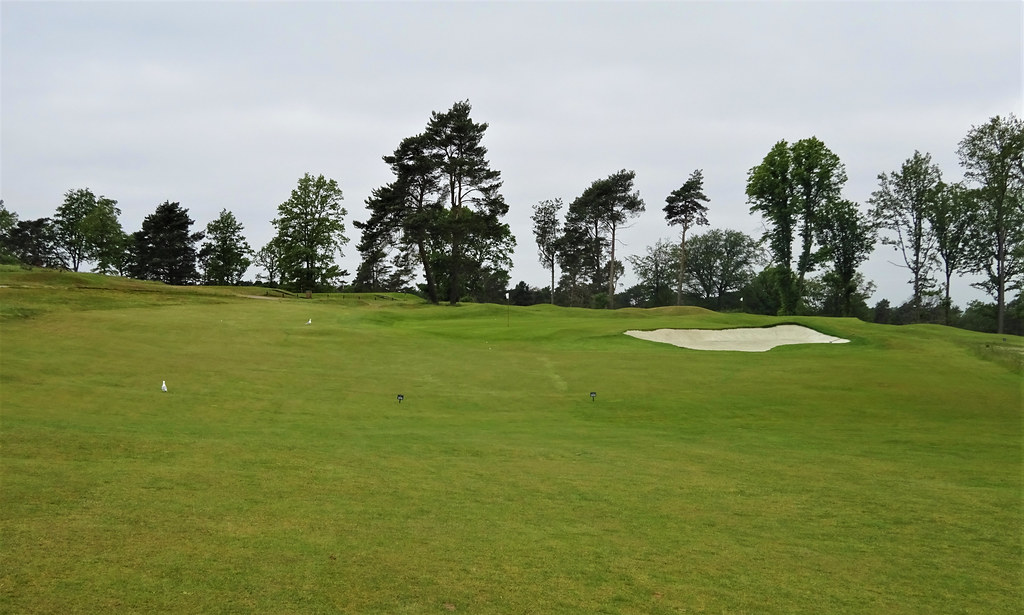

The fifth turns back on the previous hole and it too slopes severely, but to the left. There has been tremendous work done in recent years to clear out trees. The added space has allowed the greens to come alive. I hadn't realised the quality of Addy's greens.

The 6th plays over flatter land than the opening quintet of holes, but the architects created the interest by turning this hole far enough left that using a driver off the tee could result in running out of fairway down the right. Recent tree removal allows a view of the flag.

PG Wodehouse's Bunker right of the fairway. It is this feature which hints at things to come. Down the right is a severe fall-away. I suspect that entire area was quarried for its gravel…the entire course sits on gravel. There is talk of buying the property and opening more views in this direction as well as expose the edge of the drop to heighten anxiety.
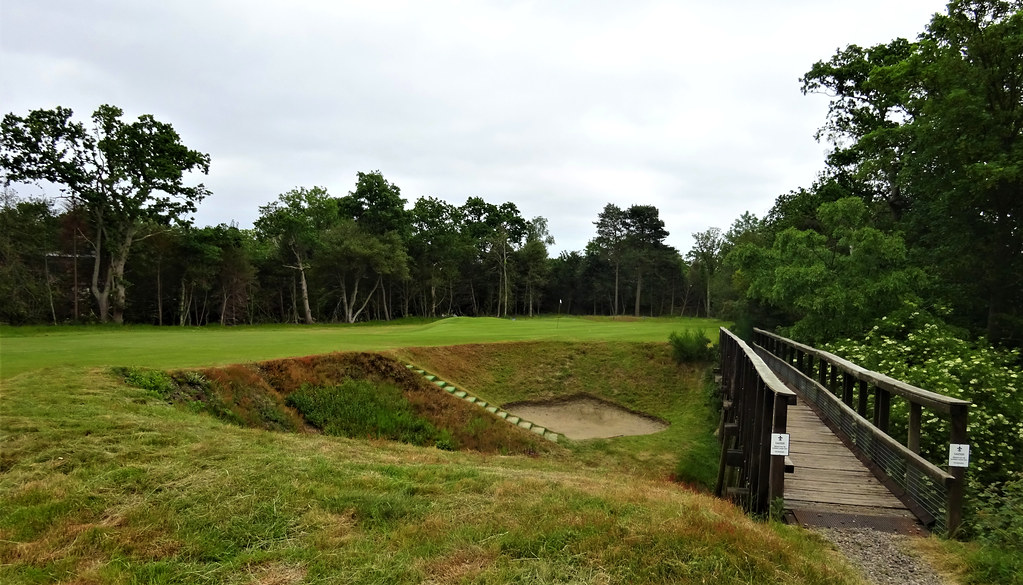
Aerial of the 7th 1947.

The removal of trees has opened up grand views around the entire front nine. I did notice that with tree removal the tees stood on the landscape, sometimes quite awkwardly. However, the one-shot 7th marks the point at which Addington hits its stride. Taking on some of the most rambunctious terrain in (walkable) golf, it is the remaining holes which reveal the true nature of Addington. This may be my favourite hole mainly because the green is seriously influenced by the hill and is very difficult to read. This photo is from well in front of the tee. Before and after tree clearance to the rear. The original double punch bowl green will be restored in some fashion. I believe work began a few weeks ago which will result in the putting surface being at least 85 yards long.
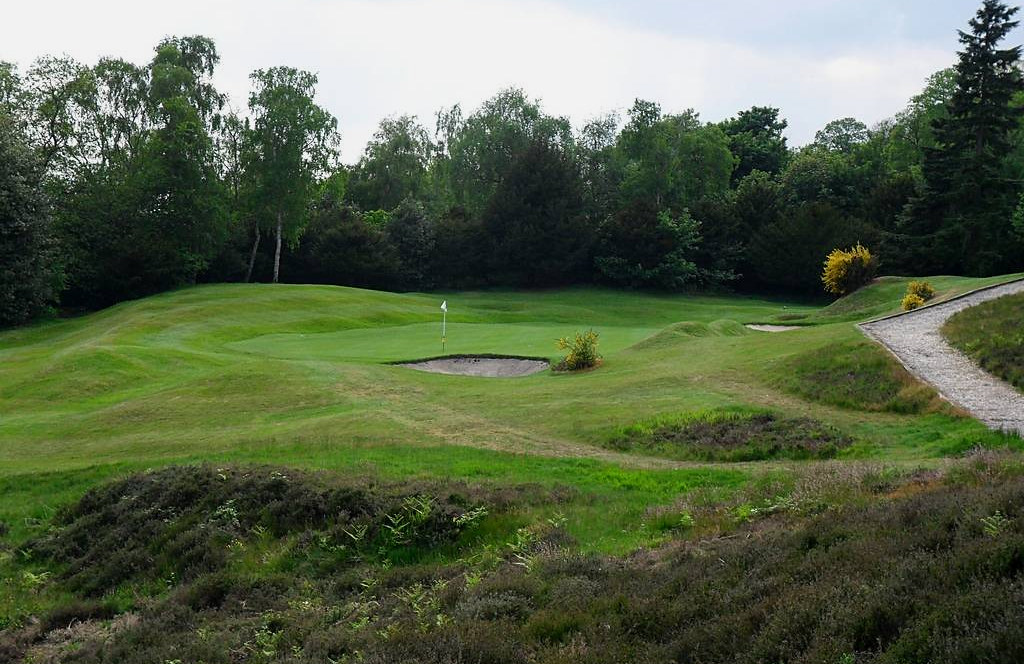

The 7th in the 1920s. It is difficult to argue that bunkers add interest to the hole. A new bunker (I suspect the furthest right) was added in 1936, a year after Aber's death. Regardless of bunkering, the interesting aspect if the original green is how much larger it is than today's version...in the region of twice the size. Also note the absence of the ridge on the right. There is talk of removing this ridge...I hope it remains.
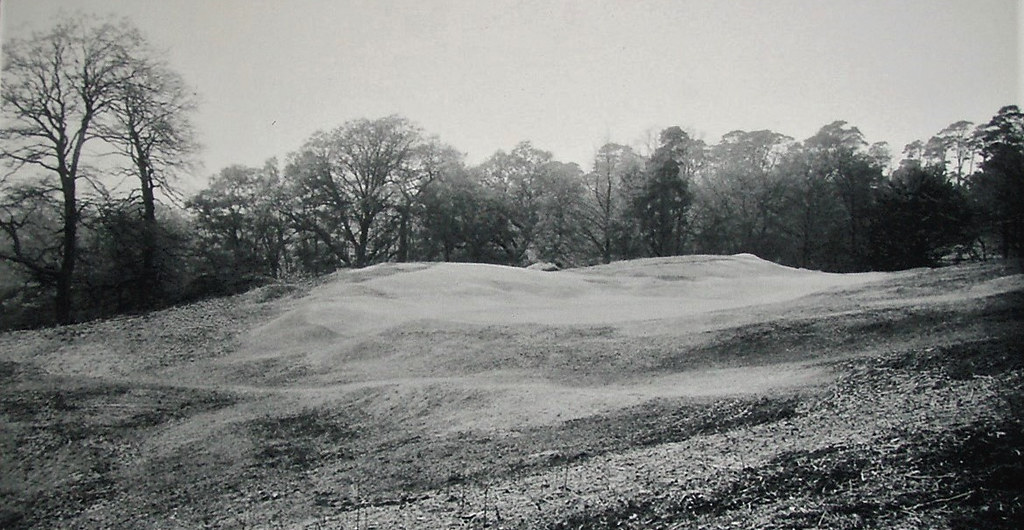
Looking back to the tee.

An indication of the green size after restoration.

Tree clearing behind the 7th has continued up the left of the 8th. A magnificent view over Addington Palace GC will soon be available. The infamous 8th with the diabolical hogback fairway now makes sense!
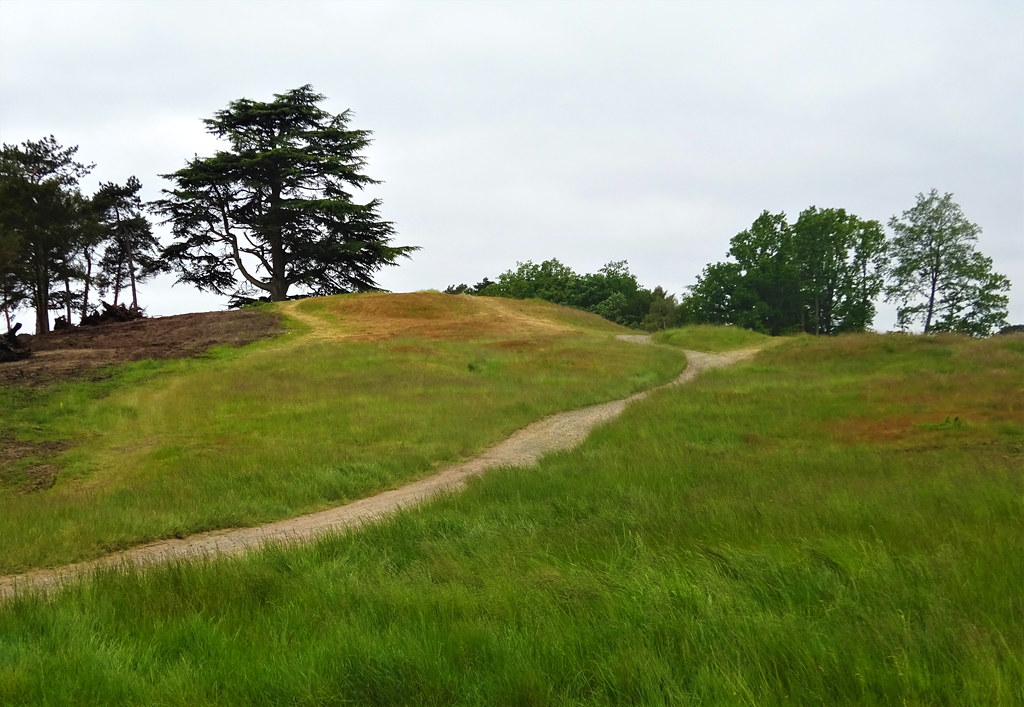
A King George III memorial stone is now showcased atop the highest point on the course and I believe for many miles. Ryan Noades is carrying the bag and Richard Pennell is closest.
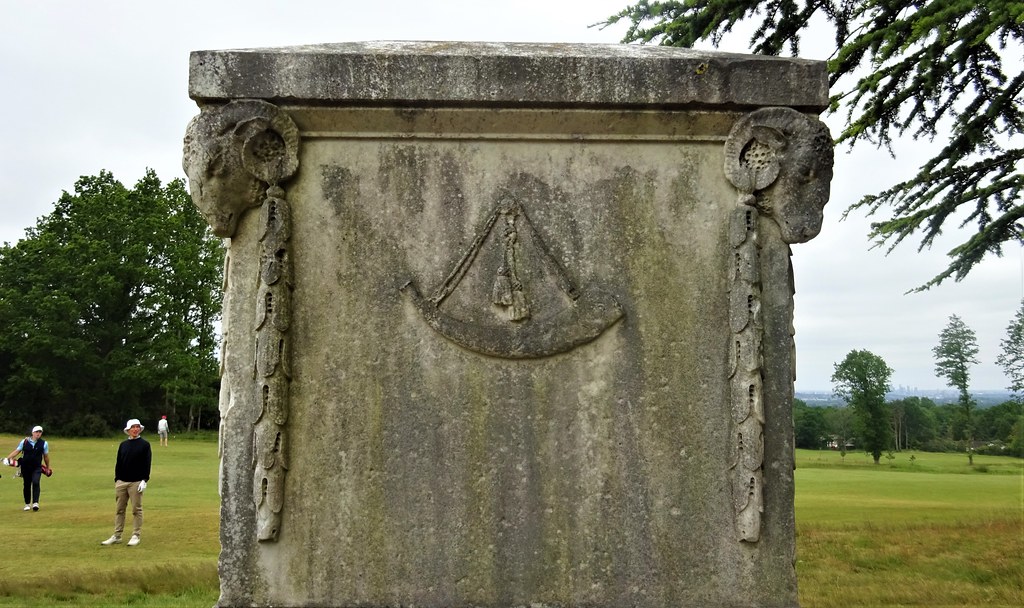
The hole is easier, but the fun element has been re-introduced. Previously, finishing the hole was a decent accomplishment. I ignored the flag and hit toward the right side of the green where there is a backstop for the downhill approach.

Behind the green before and after.


The two-shotter 9th plays deceptively long because the hole turns nearly 90 degrees left making this very much target style golf. The approach is unusual for Addington because from the fairway the perfectly settled dome green doesn't appear to have any defining features.

The 9th bridge was being repaired. Note the numbered planks so they can be replaced in the correct position.

There is some suggestion that a par 3 could be built to replace #1 should the house location be moved near the 5th tee. The course would then start on the current 5th. Behind the current 9th green a new short hole was built left of the current 12th green. The current 10th would then become the 6th, a par 5 playing to the current 10th green.
It is easy to forget the 10th plays over the same ravine crossed for #9. We played off a new tee, believed to be the Aber tee, further left and forward of the current tee.
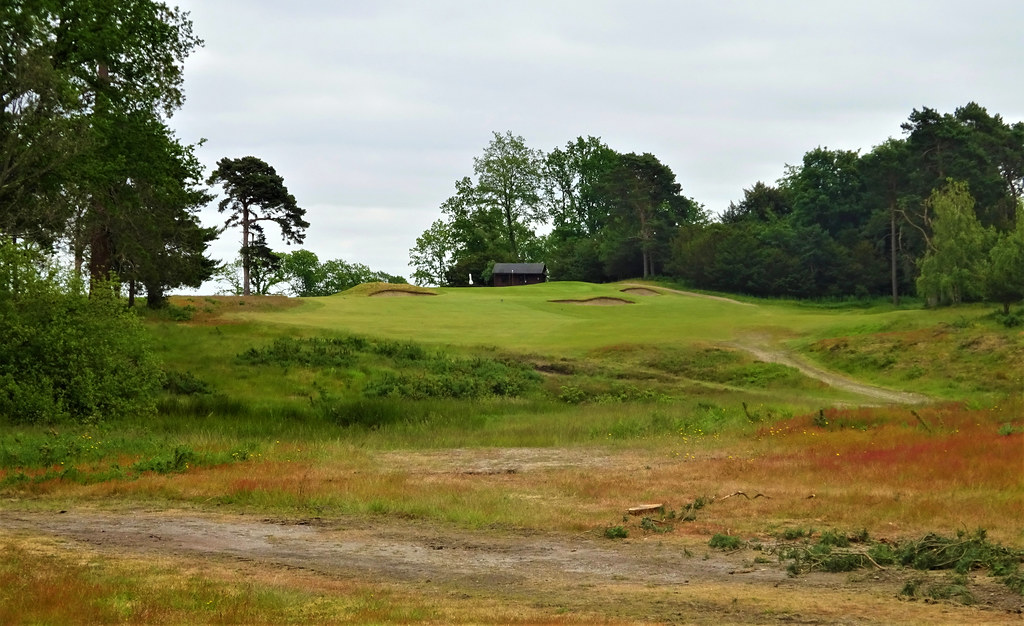
The green slopes viciously off on the front right. I think if the holes are renumbered the halfway hut and more trees will be removed.

The shortest hole on the course, the 11th green is small and forms a peninsula opening to the daily tee for the 12th. As is the case in most places, loads of trees have come out.

#s 12 & 13 combine to create the most daunting couplet in the golf lexicon. The 12th is as severe a hole as one need play. The drive is blind and lurching left. The fairway ends at ~250 yards. There is rough beyond the fairway and shy of the shelf-like fairway section further down. Being a blind shot, this isn't an ideal situation. With the recent tree clearance between 9-10 & 12, it is possible to see the 12th fairway. This photo is taken from what would be the fairway for the new 10th should it be stretched to a three shotter. The WWII flying bomb crater can clearly be seen in the photo below. Over 200 people in Croydon were killed by these bombs.
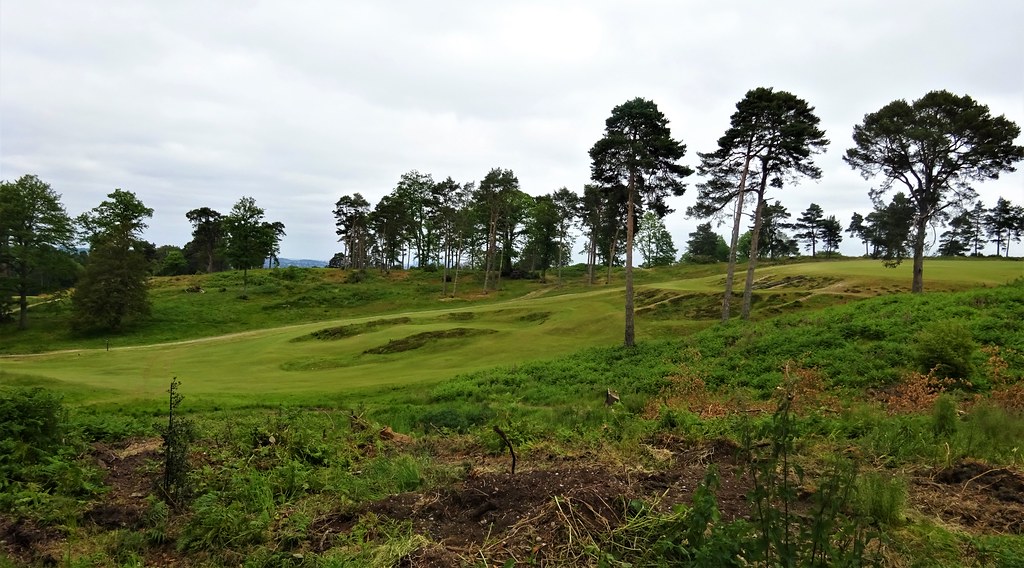
The reason for the tree clearance was to open up the new par 3 extra hole left of the 12th as seen in this old photo.

The golfer then faces a decision of what to do next; most cannot make the carry to the green. R Noades is considering the romoval of heather in the middle of the 12th fairway.

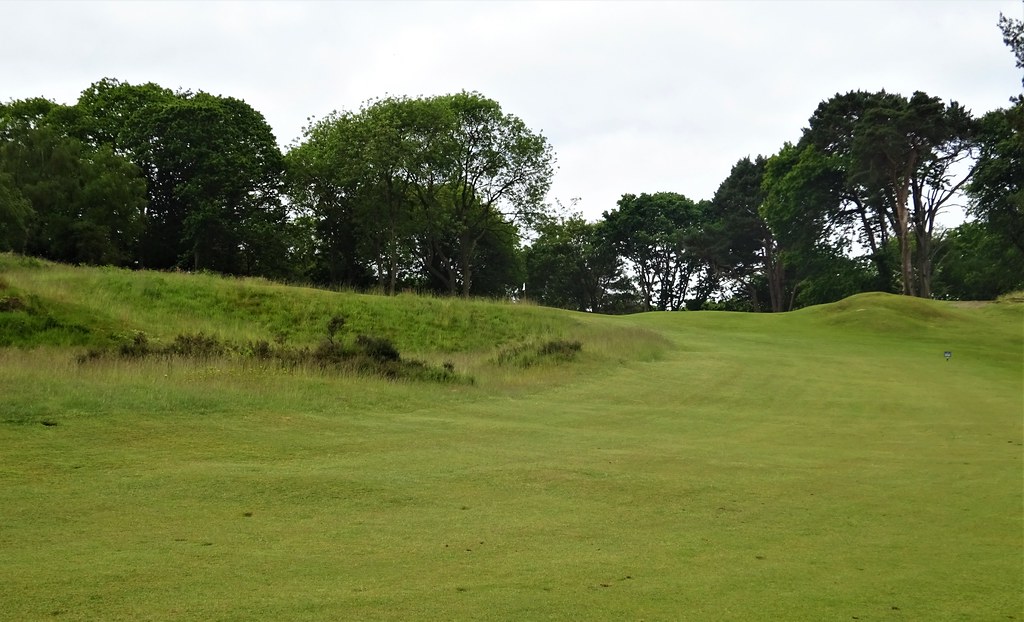
Among a good set of greens this is probably the most interesting example on the course.


Having this monster short hole follow the 12th is something else. Addington is surely unique for its many bridges, without which this routing simply would not work. A new bunker was added in 1936, I suspect one of the right bunkers. Before.
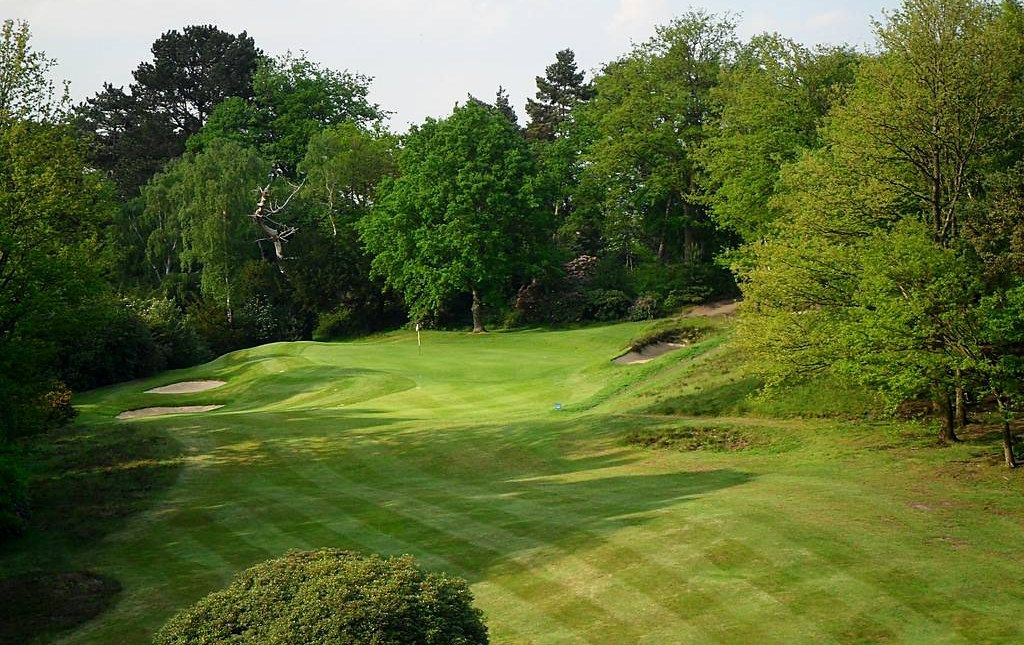
After tree removal.

Back in the day.

Colt inspecting the new build?

A closer look at the green.

The green from the 14th fairway.

Even holes such as the relatively mild mannered 14th have considerable movement to the fairways. Notice how much the right side of the green is built up.


The final would be bogey 5 is the 15th; a long par 4 playing uphill every inch of the way and to a green which is heavily stepped.
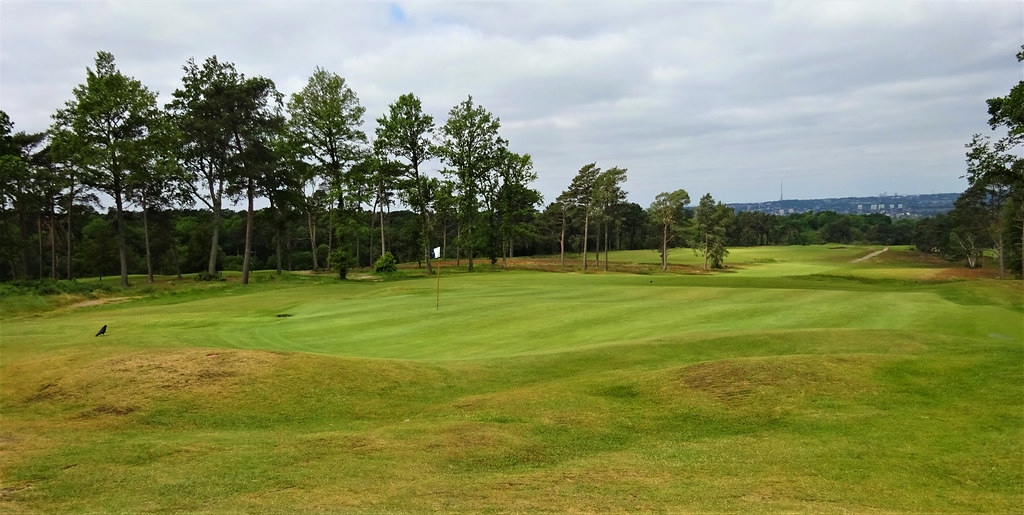
The incomparable 16th along with Sunningdale New's 6th are the two best three-shotters in the heathlands.

The lower right side has been largely cleared. I believe there are plans to convert this area to fairway.

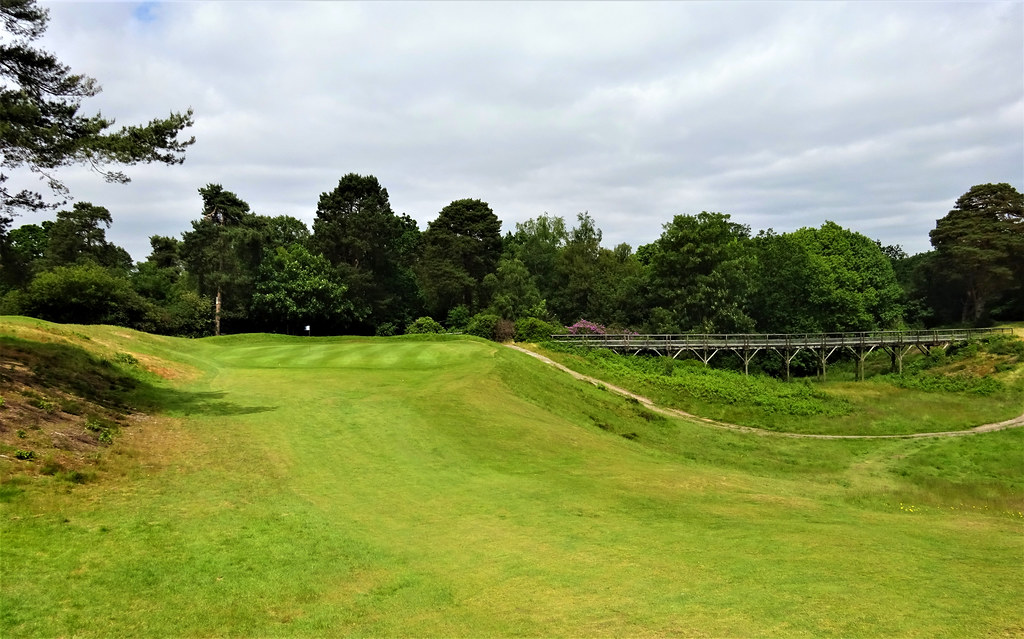

The par three 17th crosses over the 16th green. Addington has a marvelous selection of one, two and three shotters, but one could argue the collection of par 3s are the glue which make the routing a success. Before.

After. Its just possible to make out the front-right green extension. It can make for some harsh hole locations.

The view from near the current daily tee in the 1920s.
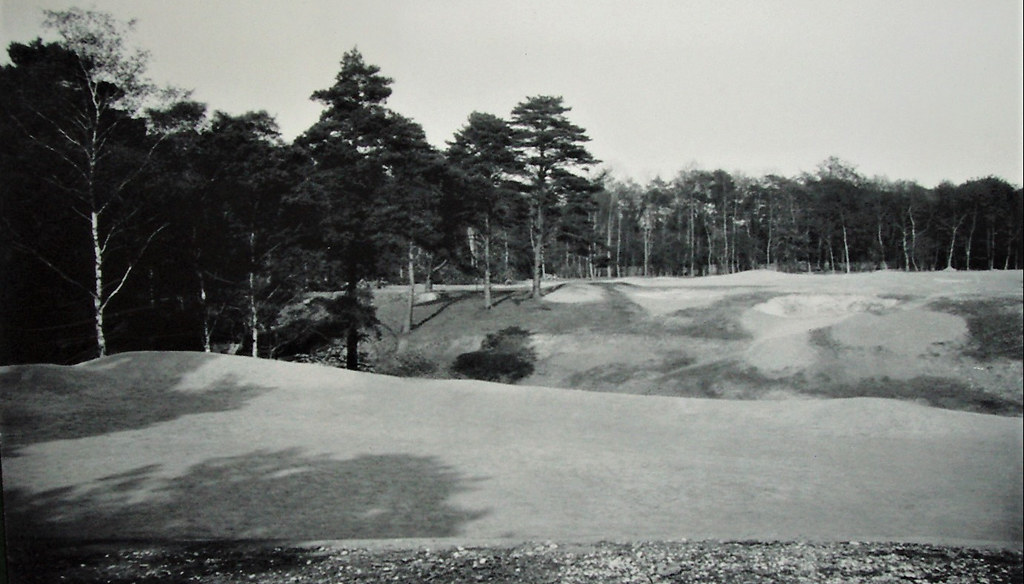
Very much like #s 4 & 5, the home hole is good without being spectacular. The biggest drawback of the hole has nothing to do with its design, but rather where it finishes. Like #1, the 18th ends at the side of the house facing the parking lot - what a shame. However, yet another outstanding green.

Addington is a severe course; often quite penal, but never dull. Due to it's heroic nature, this isn't the sort of course I would relish playing week in and week out, but there can be little debate concerning Addington's quality nor my admiration for the design. Perhaps the difficulty could have been eased with a driveable par 4 or two. Regardless, Addington is outstanding and perhaps more importantly, highly emotive. If current changes continue I have no doubt Addington will take a seat at London's top table of golf. 1* 2023
For those interested in some detail about the renovation listen to the Firm & Fast podcast with Ryan Noades.
https://podcasts.apple.com/gb/podcast/the-firm-fast-golf-podcast/id1609113507?i=1000691994363Aber's Knole Park
www.golfclubatlas.com/forum/index.php/topic,53010.0.htmlCiao